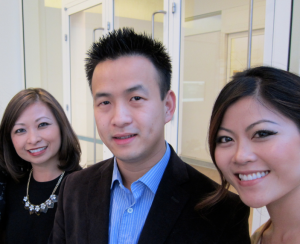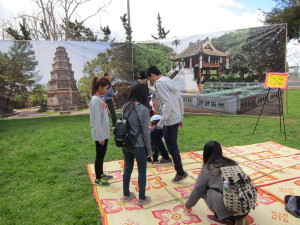
By Sharon Simonson
Expect to hear more from the Silicon Valley Vietnamese community in coming years, beginning Thursday, the 40th anniversary of the fall of Saigon. A people long gagged in America by the trauma of war and displacement, economic struggle, psychological loss, and perhaps most of all, by language, is finally finding a voice.
In Silicon Valley, home to the second-largest Vietnamese community in the country with more than 126,000 people, that voice is coming from their English-speaking daughters and sons, young millennial-generation adults with strong cultural ties to Vietnam and America and a deep desire to be heard.
The Viet Nam Project
Not quite three years ago, four such young Vietnamese-Americans founded the Vietnamese-American Roundtable with a mission to improve the quality of life for Santa Clara County Vietnamese. This year will be the third that VAR will honor the South Vietnamese peoples’ loss of their country, deaths of their countrymen, and the global diaspora of millions more.
The date marks a clear inflection point: 40 years offer a landmark perspective. But it also measures an important passage of time — time that has allowed a refugee community to gain its economic, social and now its cultural and political footing.
Eight hundred people are expected to attend the Black April commemoration in the San Jose City Hall rotunda on April 30, more than twice as many as last year. On April 14, San Jose Mayor Sam Liccardo and council people Tam Nguyen and Ash Kalra sponsored a city proclamation declaring Black April Remembrance Month. Some 75 mostly older Vietnamese men and women crowded the San Jose City Hall Council Chambers for the event. But three of VAR’s eight “core members” (the organization has no executive hierarchy) acknowledged the moment.
“This is a very significant and important month in the Vietnamese history and heritage. April 30 marked a big turning point in our story. The reason I am here and my family is here is because of this event. April 30 is a very sad day, but it also marks the beginning of new things,” said Thi Ly, one of the three VAR members.
Afterwards, the smiling and laughing group congregated outside the council chambers for dozens of photos with a framed copy of the city document. One older woman wore a knit neck scarf with the yellow and red South Vietnamese flag on one end and the U.S. flag on the other. The South Vietnamese and American flags are ubiquitous at the San Jose Vietnamese community’s gatherings, as are small groups of older men dressed in military uniforms and fatigues, sometimes including combat boots and berets.
Only 15,000 Vietnamese people lived in the United States before the fall of Saigon on April 30, 1975. A Gallup Poll in 1975 indicated that a majority of Americans preferred to keep the Vietnamese out of the United States. Many felt the Vietnamese were too culturally different to assimilate even though they knew they were refugees. About 68 percent of the 1.6 million Vietnamese-Americans in the country today, and more than 71 percent of San Jose’s Vietnamese, were born in Vietnam.
Kayla Tran, a 28-year-old special education teacher in Silicon Valley and another of VAR’s core members, said after the council meeting that many older Vietnamese want to relate their experiences to people outside of the Vietnamese community but lack the English skills. “The commemoration recognizes a holocaust for Vietnam that not a lot of people speak about. We haven’t had much exposure in the mainstream media and a large reason is the language barrier,” she said. “It’s a very prominent topic in the community. Now the language barrier is being broken by the younger generation.”
Tran is the daughter of prominent Vietnamese poet Song Nhi, who was held in a Vietnamese internment camp for eight years before coming to the United States. She was born in Saigon and came to the United States in 1993 at age six under the Humanitarian Operation Program. The program followed a 1989 agreement between the Socialist Republic of Vietnam and the United States to allow current and former re-education camp detainees to come to the United States. More than 70,000 Vietnamese have taken advantage of the HO program, one of many that have brought more than a million Vietnamese to the U.S. since 1975.
“(VAR’s) mission is to always let everyone know that we are here and we want to be represented. We want to have a voice, and there are many leaders in the community who are ready to pick up that role,” Tran said.
She credits her father’s example as an activist and community leader with her own interest in the Vietnamese culture and language. As a kid in San Jose she studied Vietnamese for eight years and today teaches as a volunteer in a Vietnamese-language school. Language, she believes, is at the heart of cultural identity and understanding.

As a special education teacher, she sees that Vietnamese-American children are unaware of their history. The annual Black April commemoration brings all Vietnamese people together and allows the oldest to teach the youngest what they have experienced. “For our generation, it is to thank our parents and to say that we do remember what happened,” Tran said.
VAR’s six other core members are: Quyen Mai, Christine Pham, Steve Huynh, Tran Mai, Andy Le and Minh Nguyen.